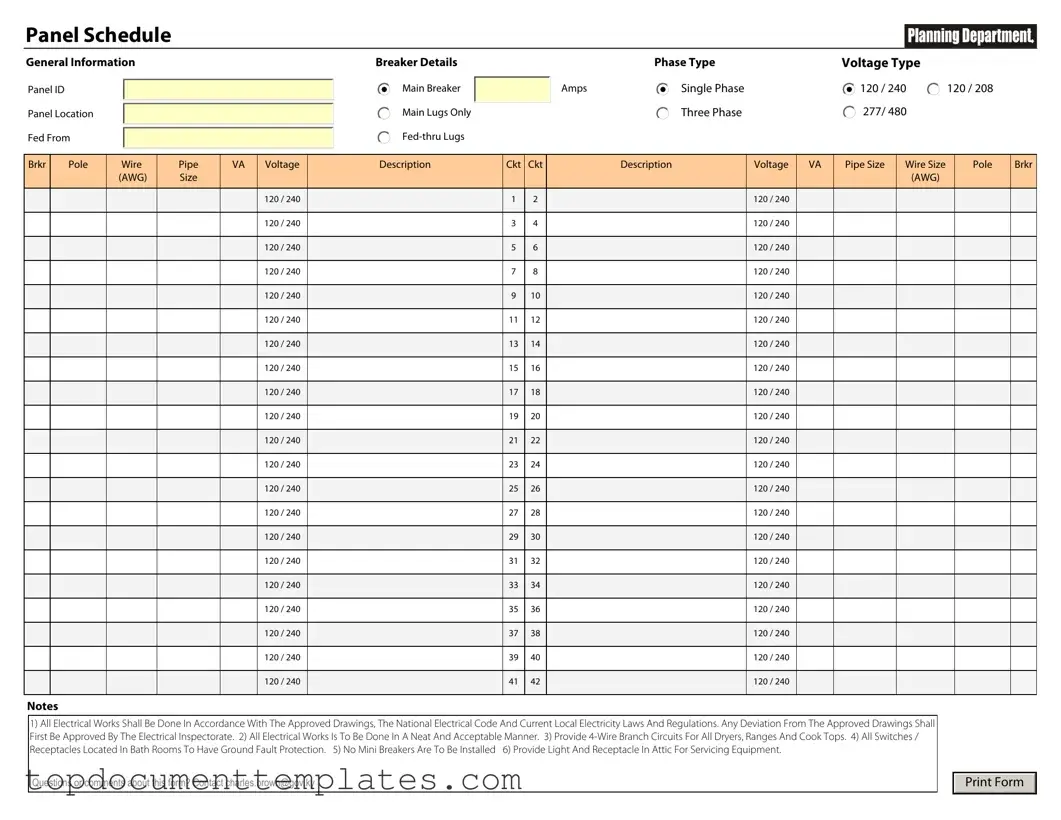The Electrical Panel Schedule form is a crucial tool in managing and documenting the electrical systems within a building. This form provides a comprehensive overview of the electrical panel's layout, detailing the circuits, their designated loads, and the corresponding breakers. Each entry on the schedule is essential for ensuring safety and efficiency, as it helps electricians and maintenance personnel quickly identify which circuits control specific areas or equipment. Additionally, the form includes vital information such as the amperage ratings, voltage levels, and any special notes regarding the operation of individual circuits. By maintaining an accurate and up-to-date Electrical Panel Schedule, property owners and facility managers can not only streamline maintenance and troubleshooting but also enhance compliance with safety regulations. Understanding the significance of this form is imperative for anyone involved in the management of electrical systems, as it plays a key role in preventing electrical hazards and ensuring optimal performance.
